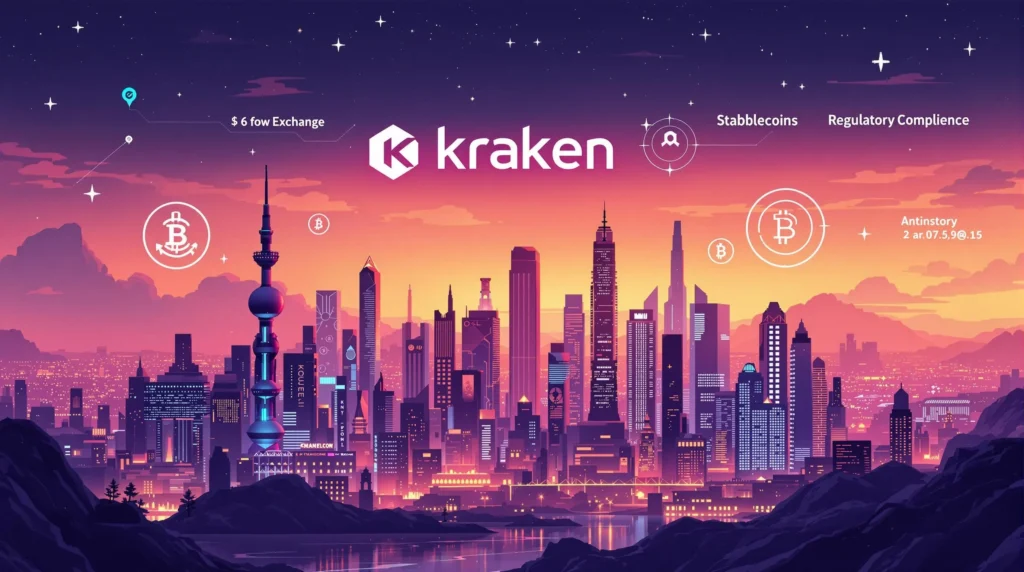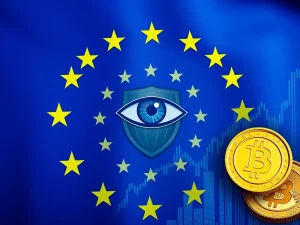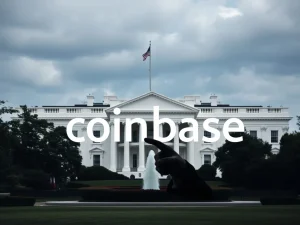Urgent Report: Kraken Eyes Bold USD Stablecoin Launch Amidst MiCA’s USDT Crackdown

Is Kraken charting a revolutionary course in the crypto exchange landscape? Whispers are growing louder that this major player is seriously contemplating launching its very own USD stablecoin. This intriguing development surfaces as regulatory winds, specifically the impending MiCA regulations in the European Economic Area (EEA), are reportedly forcing Kraken’s hand to delist Tether’s USDT. Could this be a strategic pivot or a necessary adaptation to the evolving regulatory climate? Let’s dive into the heart of this developing story.
Why is Kraken Mulling a USD Stablecoin?
The primary driver behind Kraken’s potential stablecoin venture appears to be the looming shadow of the Markets in Crypto-Assets (MiCA) regulations. MiCA, a comprehensive regulatory framework in the EU, is set to bring significant changes to the cryptocurrency market. While the specifics regarding USDT and MiCA are still unfolding, reports suggest that Kraken, like other exchanges operating within the EEA, may need to remove USDT to comply with the new rules. This creates a gap in the market for USD-pegged stablecoins on their platform, a gap Kraken might be eager to fill with its own offering.
Here’s a breakdown of the potential reasons:
- Regulatory Pressure: MiCA is reshaping the crypto landscape in Europe, and exchanges must adapt to maintain compliance. Delisting USDT could be a preemptive measure.
- Market Demand: Despite regulatory hurdles, the demand for USD-pegged stablecoins remains robust. USDT, even with its controversies, is a cornerstone of crypto trading.
- Strategic Opportunity: Launching a native stablecoin could offer Kraken greater control, reduce reliance on third-party issuers, and potentially generate new revenue streams.
- User Experience: Offering a compliant and trusted USD stablecoin could enhance user confidence and attract both retail and institutional investors to the Kraken platform.
The Current Landscape: USDT Dominance and Regulatory Scrutiny
Despite the growing regulatory scrutiny and occasional controversies surrounding Tether’s USDT, it undeniably remains the king of stablecoins and a vital artery in the cryptocurrency trading ecosystem. As the report highlights, USDT is still the most traded cryptocurrency on Kraken. This underscores its immense popularity and utility for traders seeking liquidity and stability in the volatile crypto markets.
However, USDT’s dominance is increasingly challenged by:
| Factor | USDT | Potential Kraken Stablecoin |
|---|---|---|
| Regulatory Compliance (MiCA) | Facing potential delisting in EEA under MiCA | Designed for compliance from the ground up |
| Issuer Control | Issued by Tether Limited (third-party) | Issued and controlled by Kraken |
| Transparency & Audits | Historically faced criticism, improving but still under scrutiny | Potentially higher transparency and audit standards from a regulated exchange |
| Integration with Kraken Ecosystem | External asset, integrated into Kraken | Seamless integration, potential for native benefits within Kraken |
MiCA and the Shifting Sands of Stablecoin Regulation
The introduction of MiCA is a watershed moment for the crypto industry in Europe and globally. It signals a move towards greater regulation and oversight, particularly for stablecoins, which are seen as systemically important due to their widespread use. MiCA aims to bring clarity and structure to the crypto market, addressing concerns around consumer protection, market integrity, and financial stability.
Key aspects of MiCA relevant to stablecoins include:
- Authorization Requirements: Issuers of significant stablecoins will need to be authorized and supervised.
- Reserve Requirements: Stablecoin issuers will likely need to maintain adequate reserves to back their tokens.
- Operational Requirements: Rules around governance, risk management, and cybersecurity will be imposed.
- Supervision: National competent authorities and the European Banking Authority (EBA) will play supervisory roles.
These regulations are not necessarily negative for the crypto space. While they may present challenges in the short term, in the long run, they could foster greater trust, legitimacy, and mainstream adoption of cryptocurrencies and stablecoins.
What Does a Kraken Stablecoin Mean for the Crypto Exchange World?
If Kraken does launch its own USD stablecoin, it could have significant ripple effects across the crypto exchange landscape.
Potential Impacts:
- Increased Competition: It would introduce another credible player in the stablecoin market, potentially challenging USDT and USDC’s dominance.
- Exchange-Issued Stablecoin Trend: Kraken’s move could encourage other major crypto exchanges to explore issuing their own stablecoins, leading to a more diversified market.
- Enhanced Regulatory Compliance: Exchange-backed stablecoins might be perceived as inherently more compliant with regulations, appealing to institutional investors and risk-averse users.
- Ecosystem Growth: A Kraken stablecoin could be deeply integrated into their exchange ecosystem, offering users benefits like reduced trading fees, staking rewards, and other incentives.
Challenges and Considerations for Kraken’s Stablecoin Ambition
Venturing into the stablecoin arena is not without its hurdles. Kraken will need to navigate several challenges to make its potential stablecoin a success.
Key Challenges:
- Regulatory Approval: Obtaining regulatory approvals, especially under MiCA or similar frameworks in other jurisdictions, can be a complex and time-consuming process.
- Building Trust: Establishing trust in a new stablecoin requires demonstrating robust reserves, transparency, and security. Users need to be confident that the stablecoin is truly pegged to the USD and redeemable.
- Competition: The stablecoin market is already crowded with established players like USDT, USDC, and others. Kraken’s stablecoin will need a compelling value proposition to stand out.
- Operational Complexity: Managing a stablecoin involves significant operational overhead, including reserve management, compliance, security, and ongoing maintenance.
Actionable Insights: What Should Crypto Users Watch For?
For crypto enthusiasts and traders, this potential move by Kraken is something to monitor closely.
Key Takeaways and Actions:
- Stay Informed on MiCA: Understand how MiCA regulations will impact stablecoins and crypto exchanges operating in Europe.
- Monitor Kraken’s Announcements: Keep an eye on official announcements from Kraken regarding their stablecoin plans and USDT delisting in the EEA.
- Diversify Stablecoin Holdings: Consider diversifying your stablecoin holdings across different issuers to mitigate risks associated with any single stablecoin.
- Evaluate Exchange-Issued Stablecoins: As more exchanges explore stablecoins, assess their features, compliance, and potential benefits compared to existing options.
Conclusion: A Pivotal Moment for Kraken and the Stablecoin Space
Kraken’s contemplation of a USD stablecoin launch is a significant development. Driven by regulatory shifts and strategic foresight, this move could reshape Kraken’s future and influence the broader stablecoin market. As MiCA takes center stage, the crypto world is bracing for a new era of regulation and innovation. Whether Kraken’s stablecoin becomes a reality remains to be seen, but the very possibility underscores the dynamic and ever-evolving nature of the cryptocurrency ecosystem. This bold consideration signals a potential power shift and highlights the proactive measures exchanges are taking to navigate the complex regulatory landscape while continuing to serve the needs of the global crypto community.








